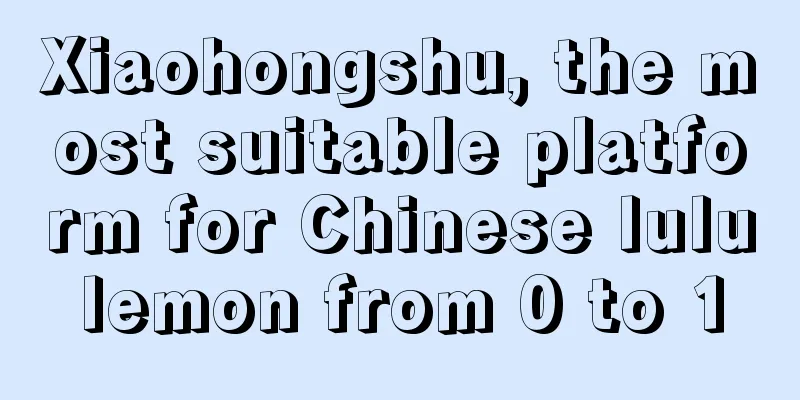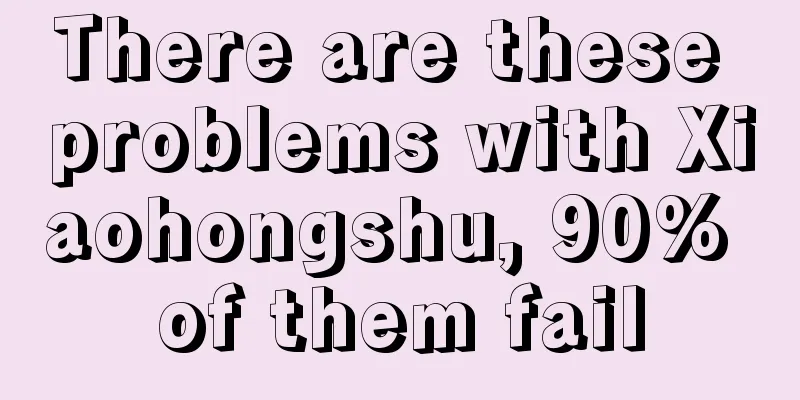13 valuable practical experiences in the current consumer goods market

The basic feelings are: expensive traffic, tight prices, involuted competition... So much so that when talking about the gains and losses of this 618, a CMO of the 3c category said: The wisest decision is to give up 618, it’s no longer competitive . So, in the current consumer goods market, how do we cope with various challenges? Is there any solution to the traffic dilemma? Based on recent sharing and exchanges, I have summarized 13 practical experiences that I think are extremely meaningful, as well as further thoughts or case supplements based on these experiences as a business operator. I hope this helps you all.
Taro and Cat: If a product does not have a new value point that is clearly identifiable in marketing and has perceptible pain points, the significance of innovation is very limited. Let me give you an example of a fall. At that time, we made a new type of headset whose main function was "ear protection". It had the functions of intelligent active noise reduction, intelligent sound quality compensation and volume control. That is, we used AI technology to achieve "listening to audio clearly at a lower volume" to protect hearing. During the internal test, the product experience feedback was very good, but after it was launched, the response was mediocre. After an internal review, the core reason was found to be that the main feature of this headset, the AI hearing protection function, was hidden deep inside the product and could not be explicitly and directly perceived by consumers, which means that the marketing value was weak. On the contrary, the bone conduction earphones that have been very popular in the past two years are significantly different from the previous in-ear Bluetooth earphones in appearance, allowing users to "know the difference at a glance", and their benefits are also very easy to perceive: full-scene sound, comfortable to wear, and not easy to fall off. This is a category innovation with marketing value. In the future, the integration of products and marketing will become increasingly higher, and outstanding marketers must be excellent product managers.
Yu: At our 618 brand review meeting, many brands expressed the pain of being "severely abused" by the platforms this year: they traded low prices for traffic, and profits for a big market. If they traded, they would die, and if they didn't, they would die too: For example, the return rate during the 618 shopping festival generally increased, but the daily promotion cost ratio of a certain cat platform was still based on the number before the return; for another example, a brand in a certain category reported that now 80% of the search traffic goes to brand words, with almost no category words. "In the era of de-branding and low prices, the relationship between platforms and e-commerce has changed from "the bigger the merchant, the bigger I am" to the current "I don't care whether you live or die, I will become bigger first" Faced with the dilemma of online traffic, many brands have begun to turn to or pay more attention to offline locations that are closer to users. The "close" here refers not only to physical distance, but also to psychological distance. For example, the core users of the brand are working women in second- and third-tier cities. Their store opening ideas are different from many similar brands: compared with shopping mall stores, they pay more attention to community stores . From the perspective of physical distance, for many second- and third-tier cities, many people may not go to shopping malls frequently, but they will still pass by nearby community stores from time to time; from the perspective of psychological distance, community stores are more likely to do business with familiar customers: the customer base is stable, and it is also convenient for store clerks to maintain relationships. The idea of our Cat Living Room is the same. Some people are very curious: Why don’t you do online knowledge sharing? It’s so easy to start a live broadcast. Why do you want to do more offline work and build your own space? The real reason lies in "closeness". Only offline can stimulate the other side of sharing, more focused listening and involvement, the communication between sharers and listeners, the communication and familiarity between each other - the user value and relationship value accumulated offline are the real moats.
Yu: In the online field, the higher the efficiency of traffic monetization, the more valuable the business is, and the key is speed. But if your traffic comes quickly, it is easy for others to wash it away with lower prices and more traffic. But offline, the emphasis is on "trading time for space", and spending time to occupy shelf space tests the team's patience and perseverance. Ultimately, the core ability that is tested when moving from online to offline is whether there is a suitable team . For online channels, the gap between categories is not that big. There are many successful transformation cases between fast-moving consumer goods and durable consumer goods. But offline, the gap between categories is extremely huge, including deep channel relationships and operating models. Whether you can find the corresponding channel operator and reliable team is the key to success or failure.
Yu: As the marketing environment becomes more complex, the marketing methods also become more complex. Even in the same industry, A and B may have completely different marketing methods due to their different strengths and team capabilities. More and more marketers agree with this. However, what is more worthy of attention is: adopting different marketing strategies at different stages of development - the cycle of iterative changes is shorter and faster than we imagined. Here we also quote our classification system of marketing goals in the "Little Red Book Full Link Marketing Course":
The core target combination is different at different stages. For example, for the launch of new products with higher prices, exposure + promotion are the core goals, but the conversion cycle may be relatively long and it is impossible to evaluate immediately after the launch. For node-type products such as chocolate, promotion + conversion are the core goals of pulse promotion.
Yu: 95% of the budget is spent on one node, concentrating resources and forces to fight a big battle, which is also a reference for node-type products. Both of our products have successfully tested this idea. The first is Xiaodu learning machine. In 2022, we released a large-screen eye-protection learning machine, and the time chosen was June 30. That's right, avoiding the 618 shopping festival when all major competitors were burning money, and instead taking advantage of the summer vacation from July to August. On the one hand, at this point in time, students are studying at home and have higher requirements for eye protection; on the other hand, with the 618 wave, other brands’ budgets have been almost spent, and the competitive pressure is relatively small; through intensive promotion within two months, it successfully occupied the minds of the people, and even though the investment started to slow down in September, sales climbed smoothly, and ushered in another explosion in November. The second is the Maimai APP. March and April are the golden job-hunting seasons. This year, we launched a saturation attack at this time point. On the one hand, we were stuck in the bonus period of the market traffic (just between the New Year’s Festival and 618), and the traffic was relatively abundant and cheap. On the other hand, we avoided the offline and buying positions of competing products, and instead focused on the positions of Douyin and Xiaohongshu, and attacked with content marketing methods. After finding the right nodes and positions, the market growth during the period was very obvious, and then due to the long-tail effect of the content and word-of-mouth communication, a sustained growth potential was formed.
Yuwei: That’s a very interesting point of view. I’ve come into contact with quite a few brands recently, and they all feel “trapped in the track”: when leading players or competitors suddenly pile up money and resources, it’s difficult to maintain market share no matter how refined the operations are. In response to this situation, one idea is to proactively look for opportunities across categories. For example, this brand bypassed Valentine's Day (a classic chocolate usage scenario) dominated by big brands and instead entered the candy market, focusing on Chinese New Year and holiday reunion scenarios. There was a saying before that Mixue Bingcheng’s 4-yuan lemonade actually snatched market share from similar bottled drinks in supermarkets: they are all about the same price, but after all, they are freshly squeezed juices, and appear to be of higher quality and more cost-effective.
Yu: The first-time scalability model is a dynamic indicator that can be used to measure the team’s content capabilities and delivery conversion efficiency. As an aside, I think the most valuable point of AI in marketing today is not content creation, but to "calculate" the motivations and interests behind the granular segmentation of user behaviors at different stages, achieve personalized matching of content that conforms to the guiding logic, and then "automatically process and fine-tune" the subsequent content to increase its attractiveness to users at the current stage.
Yuwei: Maintaining a content team with a good atmosphere requires very high standards from managers. The core difficulty lies in how to balance the openness of the process and the control of the results. At least the following three abilities are required:
Yu: The idea here is "big first, small later" - prioritize opportunities in large categories, then find opportunities for segmentation in each category. Regarding this point, Yu’s own perception is that it must meet two prerequisites:
Growth means that there is rapidly growing and unmet demand within the category; and for fast-moving consumer goods, the speed of entering the market is fast, the investment cycle is controllable, the cash flow can be quickly rolled back to grab market share, and the operating risk is lower.
Taro: Let’s break it down further: 1. Regarding the core selling points, the comments section of competing products can focus on:
The intersection of the former and the latter may become the starting point for core differentiated advantages. 2. Regarding the Douyin word cloud and Xiaohongshu scene-related words, we can consider developing a solution to take over the search position, and secondly, we can address the pain points of information flow content. 3. Selling point test measures the ability to attract buyers. Here is a formula: The efficiency of stimulating demand and interest through seeding = product function * user demand * content form In this formula, each element can be separated for testing: for example, use a banner to test functional selling points and user benefits (see cpc); use different types of content experts to test the format (see search results).
Yuwei: I increasingly feel that the major trend in the future will be the content-oriented online products and the service-oriented offline products . As traffic becomes more and more expensive, the more chances a product can have "content" attributes - attracting, discussing, and sharing, the more advantages it will have in the competition. How to systematically use content thinking to build or empower products, Offline, more and more consumers are willing to pay for real experiences, including environmental atmosphere, product trials and experience services. The "emotional value" that is truly recognized and valued must be delivered through real communication.
Yu: This idea is suitable for weaving the brand's hidden thread from 0 to 1. How to gain favor through empathy, there are also some methods for you:
Taro and the Cat: From the era of picking up money by bending over, to the era of squatting on the ground to pick up coins, and even fighting with each other. For entrepreneurs, people, resources, and energy are limited, and they must be used where they are needed most. If you don’t have the right time, the right product or service, and the right opportunity, don’t act rashly. Stay at the table, but don't bet easily. Author: Lan Lan WeChat public account: Taro and Cat Talk (ID: taro_cat) |
<<: Why are the audience segmentation strategies of Douyin and Hongshu completely opposite?
>>: The Ice Cup is in the middle of the battle, and there may be no room for new entrants
Recommend
The 3980 yuan tourist card costs less than 1 yuan. How does it make money?
This article starts from the origin of the tourist...
Tik Tok restructures its recommendation algorithm, 3 major changes need to be noted!
Recently, Douyin restructured its recommendation a...
Brand-made skits are more effective than product placement
As an emerging content marketing method, brand-mad...
The power system of Internet content platforms as revealed by the popularity of “Dig, Dig, Dig”
"In what kind of garden are you digging, digg...
What should I do if Amazon has no traffic after the new product period?
On Amazon, the best time to get traffic is when ne...
"Gaotu Jiapin" stopped broadcasting? It gained 1.86 million fans in 7 days, and the "overwhelming wealth" cannot be retained
In the wave of live streaming sales, "Gaotu J...
Delivering takeout to its “old friends”, is Kuaishou going to “fight to the death” with Douyin and Meituan?
This article deeply analyzes the explosive growth ...
What to do if no one views the products on your new Shopee store? How to create a hit product?
Everyone can see the development of Shopee stores....
What are the reasons for Shopee to associate stores? What are the consequences of being associated?
Shopee cross-border e-commerce has been a popular ...
Is it profitable to do cross-border e-commerce on Shopee? Is it reliable?
To open a store on the Shopee platform, after sele...
Tik Tok TV series editing can earn thousands of dollars a day
This article analyzes the feasibility of the film ...
Can Shopify domain name be changed? What should I pay attention to when setting it up?
Nowadays, many people choose to do cross-border e-...
Keywords for automotive marketing in 2024: 3Cization, competition among big players, and tighter budgets
The marketing competition in the automotive indust...
What are the requirements for opening a Shopee store? How much does it cost?
The cross-border e-commerce industry is still very...
Workers are addicted to Meituan’s “Pinhaofan”. Are they “taking advantage of the situation” or “being harvested”?
Workers are obsessed with Meituan's "Pinh...









